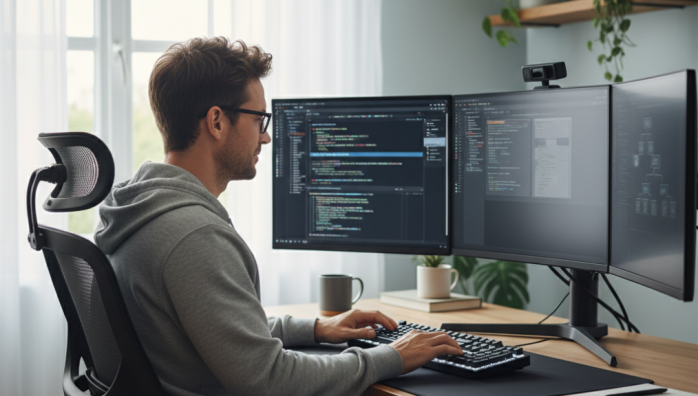Optimizing Your Developer Coding Environment
by admin in Productivity & Tools 26 - Last Update November 25, 2025

For years, my coding environment was a digital junk drawer. I\'d install a new tool on a whim, clone a project with its own set of required extensions, and tweak my settings file until it was an unreadable mess. I told myself I was being productive, but honestly, I was just procrastinating. The real cost wasn\'t just the mess; it was the constant, low-grade friction that drained my focus and killed my flow state. Every time I switched projects or opened my terminal, a tiny part of my brain had to re-adjust, and those tiny moments added up to hours of lost time.
Beyond the perfect theme
I used to spend an embarrassing amount of time searching for the \'perfect\' color theme or font. It felt like progress, but it was a distraction from the real issues. The real productivity killers were things I\'d learned to live with, the digital equivalent of a squeaky chair. My terminal took a few seconds too long to start, my linter rules were different between projects, and I was constantly typing out the same long commands. After one particularly frustrating afternoon trying to set up a new laptop from memory, I realized something had to change. My environment wasn\'t serving me; I was serving it.
The three pillars of a frictionless setup
I decided to rebuild my setup from scratch, but this time with a clear philosophy: reduce friction and automate repetition. After a lot of trial and error, I\'ve settled on three core pillars that have completely transformed my daily workflow.
1. Unifying my world with dotfiles
This was the biggest game-changer. I used to manually configure my shell (Zsh), aliases, and tool settings on every machine. The \'aha\' moment was when I created a private Git repository for all my configuration files—my \'dotfiles\'. Now, setting up a new machine is as simple as cloning the repo and running an install script. Everything from my command prompt to my Git aliases is consistent everywhere. It’s not just about convenience; it’s about creating a single, predictable environment where I never have to second-guess my tools.
2. Taming the code editor
My code editor used to be bloated with dozens of extensions I barely used. I performed a ruthless audit and uninstalled everything that wasn\'t essential to my core loop: write, test, debug. I now focus on a few key areas:
- Automated Formatting: I have tools like Prettier set to run automatically on every save. I never think about code style anymore; the machine handles it. This single change eliminated so much mental overhead.
- Intelligent Snippets: I invested a few hours creating custom code snippets for common boilerplate, like creating a new React component or a test file. What used to take a minute of typing now takes three keystrokes.
- Command Palette Mastery: I forced myself to stop using the mouse to navigate files and menus. Learning to live in the command palette (Ctrl/Cmd+Shift+P in most editors) made me drastically faster.
3. Scripting away the boring stuff
Every developer has those repetitive, multi-step tasks they do every day. For me, it was creating a pull request, which involved fetching the latest code, creating a new branch with a specific naming convention, and pushing it. I wrote a simple shell script that does it all with a single command. I\'ve since written small scripts for everything from clearing database cache to generating component boilerplate. The rule I follow now is simple: if I have to do a manual task more than three times, it\'s time to automate it.
Ultimately, I realized that an optimized coding environment isn\'t about having the trendiest tools. It\'s about creating a calm, predictable, and fast space that gets out of your way, letting you focus on what actually matters: solving problems and writing great code.














